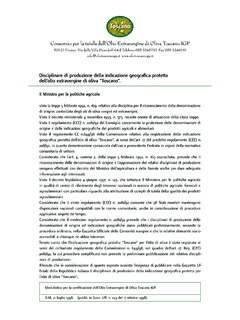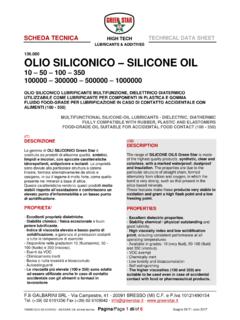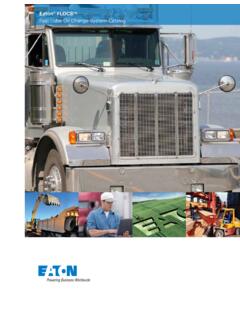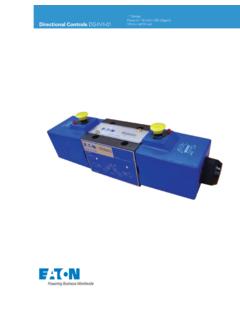Transcription of Summary 2 Stroke Oil Testing - wdarc.org
1 RCGF Aero Products Tel: Page 1 of 8 G i a n t S c a l e R/C E n g i n e s t h a t S u r p a s s E x p e c t a t i o n s Summary 2 Stroke Oil Testing By Ken (BIG BIRD) WACO Brotherhood #70 Summary comments oil mixes and carbon formation: These tests were designed to simulate the effects of long-term high engine temperatures on the formation of carbon from the different two- cycle oils tested. The target temperature was 220 degrees F. However, it was only achieved on a couple of engine runs. A more typical temperature was in the 190-200 degree F range.
2 In order for these tests to be truly scientific, each engine run would have to be replicated on a different engine and the order of the oilmix runs randomly selected. The only thing close to science about these results is that they were run by an individual who makes a living as a scientist. The cost of this trial was estimated to be between $2500-$3000. It was conducted in support of an ongoing research program utilizing large RC aircraft to conduct aerial sampling for various projects. I am happy to share the results with you. After conducting the tests , the real question in my mind is whether the engine temperature within normal running parameters actually has any influence on the formation of carbon at all.
3 It seems to me that the temperature of combustion of a fuel mix over an extended period would not change very much regardless of the temperature of the engine. Testing this idea would require another series of engine runs which won't happen anytime soon in my shop. The validity of the idea that engine temperature within normal range has little impact on the formation of carbon in the engine because the heat of combustion is similar regardless of engine temperature (within normal range), impacts the conclusions of this test. If you believe that engine temperature impacts carbon formation then these results only apply to engine runs of extended length with elevated engine temperatures.
4 However, if you believe that the heat of combustion is similar regardless of engine temperature (within normal ranges) then it is the heat of combustion which impacts the formation of carbon and these results apply to the typical flyer who runs an engine at all throttle settings and engine temperatures. It is my belief (without data which is dangerous) that within the normal engine temperature ranges of 100-200 degrees F, the heat of combustion changes little throughout the engine run and carbon formation is consistent regardless of engine temperature. The amount of carbon in an engine seems to be related to the quantity of fuel burned for a specific oilbrand.
5 I think (maybe I am optimistic) that the data from these extended engine runs is an indicator of the carbon formation for each of these oilmixes under normal engine running conditions. A quick check of the validity of this concept would be for several modelers who has used one of these oils and burned at least 3 gal of fuel in an engine to pull the cylinder off the engine, take a picture and post it. We could then compare the picture I will post (with the help of Ken) to the picture of carbon deposit accumulated under normal conditions. RCGF Aero Products Tel: Page 2 of 8 G i a n t S c a l e R/C E n g i n e s t h a t S u r p a s s E x p e c t a t i o n s Interpreting the results: As you look through the pictures, you will notice 4 different patterns of carbon formation on the piston.
6 Amsoilgenerally coated the entire piston, Mobil and a couple of others coated the majority of the piston leaving some portions clean, Pennzoildeposited carbon in a single stripe and Belray deposited carbon in a couple of spots. I don't know the explanation of the deposition patterns or the importance of the patterns. Bel Ray oilmix: I believe that I have an explanation about the initial increased temperatures and increased fuel consumption with Bel Ray H1R. For the test engine to turn the propeller at 6000 rpms, a very similar amount of energy was required from each oil-gas combination. Surprisingly, all of the oil-gas mixes except 2, required only very minor adjustments of the high speed needle to achieve peak rpms.
7 Therefore, the energy per unit volume of all of the oil-gas mixes except two were very close. The two oil-gas mixes which required a major adjustment of the high speed needle were Belray @ 32:1 and Amsoil@ 100:1. Both of these mixes required that the high speed needle be opened between 1/8 and 3/16 of a turn. Therefore, these 2 mixes had less energy per unit volume than the other 8 mixes. Since these two mixes are very different, what is the explanation? I believe the evidence strongly suggests that on the 8 mixes which only required minor adjustment of the HS needle, combustion of the oilcontributed a significant amount to the energy required to turn the prop.
8 These mixes also had significant carbon accumulation. In the case of Belray, the oildid not combust and did not provide any energy to the task of moving the propeller. Therefore, the HS needle needed to be opened to allow more gas into the engine to provide the energy to spin the prop at 6000 rpms. The lack of carbon formation with this oilalso supports the suggestion that the oilwas not burning and adding energy to the fuel. The high cylinder temperatures observed early in the run was from a lean run. Opening the needle valve was required to allow enough gas into the engine to readjust the mixture to the proper ratios.
9 Since the oildoes not combust, the fuel requirements of the BelRay oilmix is increased by around 15%. In other words, you need to carry around 15% more fuel on your airplane for the same flight time. This is not much of an issue for the average modeler but it may be a real issue for me. If I burn off a gallon of fuel per flight (typical of some flights), I will have to carry an additional 20 ozs of fuel if I choose to use Belray h1R (an extra lbs of fuel load). In the case of Amsoil100:1 mixed at 100:1, there is so little oilin the mix, the combustion of the oiladded very little to the energy needed to turn the prop.
10 The HS needle had to be opened to allow in the extra required gas to turn the prop at full speed. The presence of carbon with this mix indicates that the oilwas burning but was in insufficient quantities to provide much power. Finally, please remember that this test looked at carbon formation but did not RCGF Aero Products Tel: Page 3 of 8 G i a n t S c a l e R/C E n g i n e s t h a t S u r p a s s E x p e c t a t i o n s examine the ability of the oilmixes to lubricate. Several individuals have ask me to conclude which oilI would use in my "high engine stress" flying in the summer of '05.




